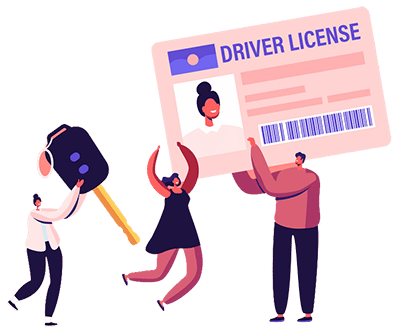The New York Driving Test Experience
Are you about to take the New York driving test? If yes, you need to have an idea of what to expect; this will increase your chances of passing the test. Better yet, knowing what to expect will reduce anxiety on the day of the test.
We shall be giving you in-depth coverage of the New York driving test experience with emphasis on what to expect.
Scheduling for The Test

To give yourself enough time to prepare, you should schedule the test a few months in advance. Of course, you have a better chance of passing the practical exam if you choose a test center close to where you live since you will be familiar with the roads.
Don’t forget, schedule your test during convenient weather conditions; even if you’re in New York, it’s not easy to drive during the winter season.
Arriving at the Test Centre
To avoid getting nervous, you need to arrive at the test center at least 30 minutes before the scheduled appointment. Why? So that you could have a few extra minutes to confirm if everything is in order before the test. Not to mention, you’re less likely to be nervous if you arrive a few minutes before the appointment.
After you check-in at the test center, you’ll need to submit your documents to get processed. The documents you’ll be required to show are your learner’s permit, five-hour certificate, identification documents, car insurance, and car registration.
Pre Driving Inspection
The examiner will introduce him/herself, then show you the performance evaluation score sheet. After the introduction, the driving test officially begins.
The examiner will ask you to point out the emergency flash, the hand brake, defroster, and headlights. The examiner will also ask you to operate the vehicle controls such as the headlights, brakes, turn indicators, windscreen wipers, headlights, and horns.
But that’s not all; the examiner might ask you to demonstrate hand signals and explain their meanings.
Driving Test Stage 1
After the pre-driving test, the examiner will get in the car and explain how you will be evaluated and the minimum criteria to pass the driving test. In New York state, the DMV road test evaluation score sheet is usually marked based on how many mistakes you make during the road test; if you get anything above 30 points, you get a fail but if you get less than 30 points, you get a pass.
The examiner will then instruct you to drive out of the test center parking lot. Once you’ve safely driven out of the DMV parking lot, the examiner will instruct you on a specific route to follow.
Later, the examiner will ask you to pull up and back up slowly without hitting the curb. At this point, the examiner will be evaluating whether you’re signaling, watching out for blind spots, or whether or not you know how to park properly.
Driving Test Stage 2
Now, what’s next? Well, it depends on where you will be taking the test. If you’re doing the road test within the New York City proximity, you could have an advantage since most places will have a maximum speed limit of 25 miles per hour. Then again, the city zone could be confusing and you will come across many obstacles and pedestrians so you need to be fully alert of your surroundings.
However, if you’re taking the driving test outside the city zone, you could come across expressways with a minimum speed of 45 miles per hour. Of course, if there is a nearby highway or expressway, the examiner won’t waste that chance to see how you drive outside the metropolitan area. Busy or not, the examiner will want to know how you can perform under pressure.
For instance, do you anticipate the actions of other pedestrians? What if there is bad weather, will you slow down? Do you drive too closely to the vehicle in front of you?
Heck! You will probably be told to drive through a construction zone, a hazard zone, or a school; this is because the examiner will want to evaluate your judgment skills and if you can anticipate potential hazards.
Otherwise, behind the wheel test will take you about 15 to 20 minutes to complete. However, the test is not over until you’re back at the DMV, and the vehicle engine has been switched off.
After The Test
Now the drum rolls! After the test, the examiner will inform you if you’ve passed or flunked the test based on the accumulated points. If you get less than 30 points, congratulations since you’ve passed the test.
However, if you get more than 30 accumulated points, it means you’ve failed and you need to retake the test.
